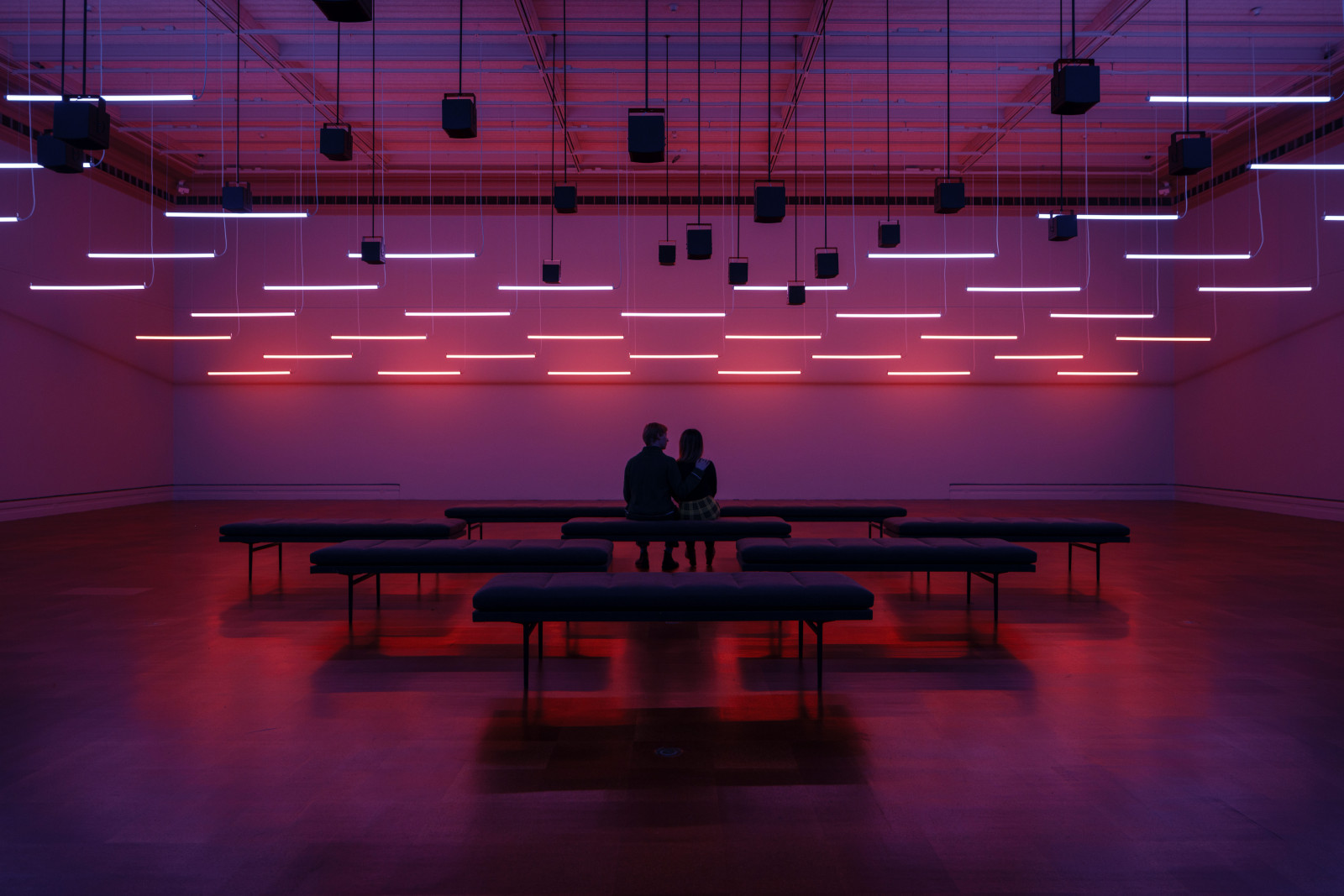Made in Porto-Novo
Made in Porto-Novo
Artist
Romuald Hazoumè
(Republic of Benin, born 1962)
Date2009
DimensionsH: 210 cm; W: 300 cm; Depth: 150 cm
MediumPlastic canisters, various metals, and a wood platform
ClassificationSculpture
Credit LinePurchased with funds given by Dorothy Mackenzie Price
Object number
2013.159
On View
Toledo Museum of Art (2445 Monroe Street), Gallery, 01
DescriptionMade in Porto-Novo is an installation piece featuring Hazoumè’s trademark plastic canisters and vessels, which has been shaped into four instruments of a band ensemble. The band ensemble includes drums, bass, saxophone and a trumpet. Along with the jerry-can portrait placed in front of the instruments, there are also Benin sounds emanating from the instruments themselves. Within the object, next to the bass fiddle, a white sound box sits inside.
MIP is an installation piece featuring Hazoumè’s trademark plastic canisters and vessels, which has been shaped into four instruments of a band ensemble. The band ensemble includes drums, bass, saxophone and a trumpet. Along with the jerry-can portrait placed in front of the instruments, there are also Benin sounds emanating from the instruments themselves. The plastic elements are secured together with copper wires run through holes as well as screws and tape. They are attached to a wood platform with metal armatures and screws.
Within the object, next to the bass fiddle, a white sound box sits inside with white wires concealed in its support and under the platform. Wiring feeds through tubing and plugs into an electrical wall outlet behind. Copper wire is frequently used in its construction to hold materials together. A round, black, steel rod is part of its skeletal structure.
Label TextMaterials are a way of connecting with people’s lives. Everything we use says something about us, and all the things we reject and throw away are still part of us, part of our lives in a way. My work is like a kind of modern-day archaeology. Known for his masks made of found plastic canisters and vessels, Romuald Hazoumè’s MIP is an innovative installation piece shaped into four instruments of a band ensemble. The music composition that emits from the sculptural work is based on Hazoumè’s one-day record of the Kpayo Army’s activities (a group of illegal petroleum traffickers in Benin)—thus creating a soundscape literally “Made in Porto-Novo” (Benin’s capital). The looped track reveals the Kpayo Army’s early morning routines performed to the chance song of birds. MIP is a documentation of the current state of life in Benin: the people’s reliance on petroleum and fresh drinking water, as well as the thousands who transport such vessels and cargos throughout the nation daily—legally or otherwise. MIP accordingly stands as Hazoumè’s reinterpretation of modern slavery and cheap labor in present-day Africa.Published ReferencesRomuald Hazoume, Dublin, Ireland, Irish Museum of Modern Art, 2011, repr. (col.) p. 126-127.
Romuald Hazoume, My Paradise - Made in Porto-Novo, Ostfildern, Germany, Hatje Cantz Verlag, 2010, p. 104, repr. (col.) p.116-17.
Romuald Hazoume: Made in Porto-Novo, London, October Gallery, 2009, p. [6-7], repr. det. (col.) p. [6], repr. (col.) p. [18-21].
Nortey, Samuel, Edwin K. Bodjawah and Kwaku Boafo Kissiedu, "African Masking Systems: An Archive of Social Commentary," African Arts, v.54, n.4, 2021, fig. 6 (col.) p. 56, p. 58.
Exhibition HistoryLondon, October Gallery, Made in Porto-Novo, Oct. 15-Nov. 28, 2009.
Neumünster, Gerisch Foundation, My Paradise – Made in Porto-Novo, June 6-Oct. 10, 2010.
Dublin, Irish Museum of Art, Romuald Hazoume, Feb. 9-May 15, 2011.
Wales, Oriel Mostyn Gallery, Romuald Hazoume, 2011.
about 10-50 CE
about 1875-1900
late 19th century, Qing Dynasty (1644-1912)
13th century
250-150 BCE
c. 247-221 BCE
Edo Period (1615-1868), 19th century
about 305-285 BCE
about 305-285 BCE

Membership
Become a TMA member today
Support TMA
Help support the TMA mission




















